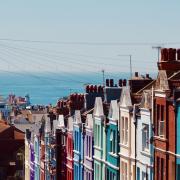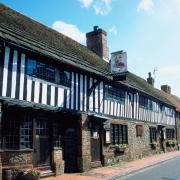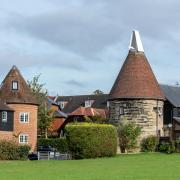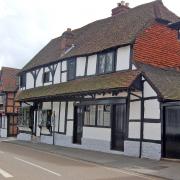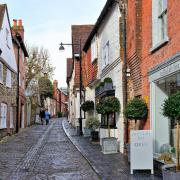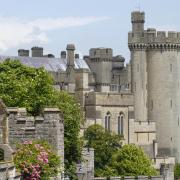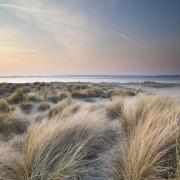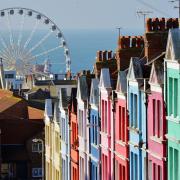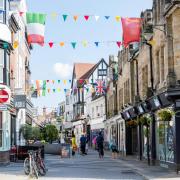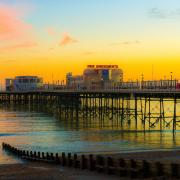A history of volunteer-run heritage line The Bluebell Railway, which has overcome many obstacles over the years to become one of Sussex’s best-loved attractions

Since the story of the Bluebell Railway is a remarkable one of overcoming obstacles and succeeding against all the odds, a mere pandemic stood little chance of scuppering the 60th birthday party of this famous Sussex attraction. And so a sizeable socially distanced crowd gathered in the glorious sunshine as the first train since lockdown pulled slowly out of Sheffield Park on 7 August to signal the resumption of service and the commencement of the diamond anniversary celebrations.
Six-year-old Alex Venton from Petworth was given the honour of blowing the whistle to get the wheels rolling as a thank you for emptying his moneybox to help the not-for-profit railway deal with the financial crisis brought about by COVID-19. Alex’s mother said: “He read about the appeal in the railway’s newsletter and asked if he could give the £6.10 in his money box.”
Alex’s glorious gesture was replicated by thousands of supporters from the UK and around the world eager to help at a time of crisis. Trevor Swainson, funding governor of the Bluebell Railway Trust, explained: “We ran a pilot fundraising appeal to test the willingness of people to support the railway. The target was £25,000 but this was soon passed. We then set an ambitious target of £300,000. We feared the worst. Would people be prepared to support us in the face of incomes reduced through furloughing and other pressures?” He need not have worried as the total raised reached a staggering £400,000. And money is still coming in.
But it’s not quite full steam ahead just yet as Chris Hunford, chairman of Bluebell Railway PLC, observed: “For the foreseeable future we will run at weekends only. Trains will run from Sheffield Park to Kingscote only (not stopping at Horsted Keynes). East Grinstead station will remain closed due to the restricted nature of the station site and to adhere to social distancing rules. Should public demand be there, we will add further trains mid-week starting on a Friday and working backwards.”

Despite being obliged to operate a restricted service for the time being at least, the Bluebell Railway can look back with pride on a remarkably distinguished history. The line’s original incarnation was as the Lewes and East Grinstead Railway, which connected the two Sussex market towns with the rest of the railway network. The first train pulled away almost precisely 138 years before last month’s re-opening.
Never the most popular service, it really began to struggle badly after World War II. Apart from anything else, the trains ran rather slowly, prompting one observer to note that you could disembark, pick some bluebells and then hop back on. There are other plausible explanations as to why it was dubbed the Bluebell Line but that is perhaps the most appealing.
In 1954 British Railways proposed the closure of the line with the date set for 28 May 1955. Closure was originally scheduled for 13 June 1955 but a good old ASLEF strike (remember them?) brought the line to a premature end or, rather, very nearly did. Cometh the hour, cometh the woman. Miss Rose Bessemer, who lived in Chailey and was leading the fight against closure, spotted a flaw in the legal process and rightfully claimed there was an obligation on the part of British Railways to provide four trains each way every day. The discovery was little short of sensational and obliged British Rail to go into reverse and reluctantly provide what became known as the ‘sulky service’. The enabling legislation was eventually passed and the trains ran until the spring of 1958, when the predictably late-running 16.28 eventually pulled away from East Grinstead with almost a thousand passengers on board and, amid both tears and fanfare, trudged its weary way to Lewes.

Have you read our series about Sussex’s past including anecdotes and folklore?
The fifth cavalry arrived 364 days later in the unlikely guise of four students from Brighton, who organised a meeting in Haywards Heath. This resulted in the formation of the Lewes and East Grinstead Railway Preservation Society, which was soon re-christened the Bluebell Railway Preservation Society.
Progress was rapid, a locomotive called ‘Stepney’ and a couple of carriages were purchased and on August 7, 1960, amid much ballyhoo and with TV cameras and 2,000 people watching, the Bluebell Railway’s renaissance was underway. One of the passengers on that opening train was Kate Longley from Turners Hill who, 78 years previously, had travelled with her family from Kingscote to East Grinstead on the very first train to run on the line in 1882. By the end of year, 12,000 passengers had travelled on the line, gross revenue exceeded £2,000 and membership stood at over 1,500.
Even if you’ve never revelled in the nostalgic thrill of riding on the Bluebell Railway, you will almost certainly have seen it on television or at the cinema as it has become an undoubted celebrity. Its movie debut came when it starred alongside Deborah Kerr in The Innocents in 1961. Since when it has built an impressively long list of credits that is the envy of Hollywood. It’s hard to choose highlights in such a distinguished career but appearing in four of Ken Russell’s movies must count among them. Then it featured in Hercule Poirot opposite David Suchet; The Wind in the Willows with Terry Jones, Eric Idle and Steve Coogan; the TV remake of The Railway Children alongside Jenny Agutter and Richard Attenborough; Queen Victoria with Prunella Scales and George Cole and some may have recognised Horsted Keynes station which became Downton station in the huge TV hit, Downton Abbey. How much longer can it be before the Bluebell Railway receives a BAFTA or Oscar for its lifetime achievements? Perhaps by way perhaps of consolation, it did pick up the Heritage Railway of the Decade award just a few years ago.
During its first half-a-dozen decades, the Bluebell Railway has grown steadily by increasing its membership, acquiring more rolling stock, upgrading its stations, improving facilities and extending the line to East Grinstead. It has repeatedly demonstrated how resourceful it is, has coped remarkably well with COVID-19 and now looks set to remain one of Sussex’s top attractions for at least another 60 years.
Find out more here including running times and how to buy tickets.
Join the conversation on our Facebook page




